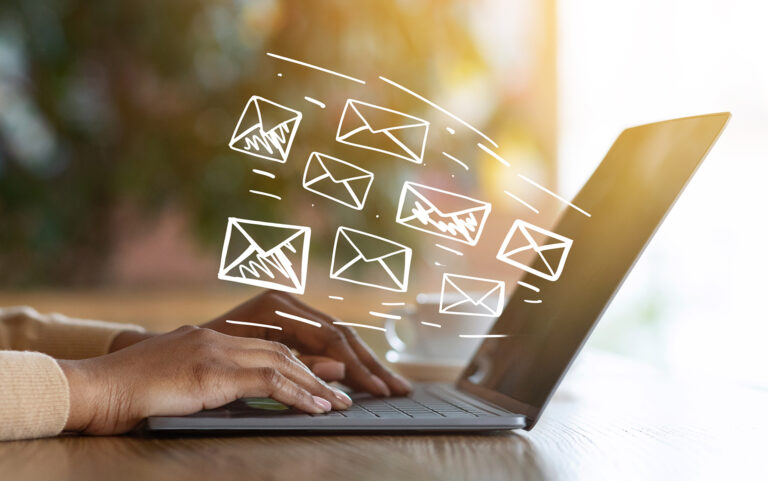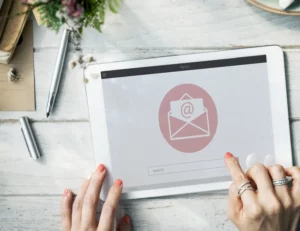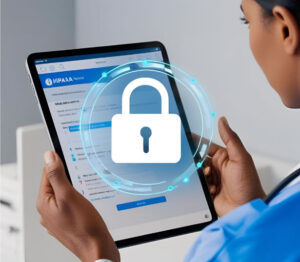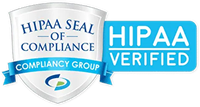Sending sensitive information via email has become increasingly commonplace, whether it involves financial data, confidential reports, or personal details. However, without proper safeguards, these documents can be vulnerable to interception, hacking, or accidental exposure, risking data breaches and privacy violations. Securing these documents before transmission is essential, and one of the most effective ways to do this is through encrypting email attachments.
Encrypting email attachments is a critical practice for maintaining privacy and data security in digital communication. It ensures that only authorized recipients, who possess the correct decryption keys, can access the enclosed information. As cyber threats continue to evolve, understanding how to encrypt documents sent via email properly becomes increasingly vital for individuals and organizations committed to protecting their confidential data.
This guide will walk you through what it means to encrypt email attachments, why it is necessary, and practical methods to implement encryption effectively. Whether you’re sharing sensitive files for work or personal reasons, mastering attachment encryption is a cornerstone of responsible digital security.
Understanding Email Attachment Encryption
Encrypting an email attachment involves converting the file into a protected format that cannot be accessed or opened without the proper key or password. When you encrypt a document, the original content is transformed into an unreadable, scrambled version that looks like gibberish. Only someone with the correct decryption password or key can reverse this process and view the original file.
The primary benefit of encrypting attachments is safeguarding sensitive documents from unauthorized access—whether from cybercriminals, malicious insiders, or accidental leaks. This is especially important when sharing confidential or proprietary information over email, which is inherently vulnerable during transmission. Attachment encryption adds an extra layer of security beyond simply sending files as email content, ensuring that even if the email itself is intercepted, the document remains protected.
There are different types of encryption relevant in this context. Password-based encryption involves securing files with a strong password, which needs to be shared securely with the recipient. Public key encryption utilizes a key pair—comprising a public key and a private key—to encrypt files securely and decrypt them, particularly in enterprise or high-security settings. Additionally, some tools allow for file-level encryption within archives or container files. The choice of method depends on your security needs, technical expertise, and the tools at your disposal, but all serve the fundamental purpose of safeguarding your attached documents.
The Need for Encryption in Email Communications
Sending unencrypted email attachments poses several risks. Cybercriminals or eavesdroppers could intercept your email and access confidential documents, leading to data theft, identity theft, or competitive disadvantages. In some cases, legal or regulatory frameworks—such as GDPR, HIPAA, or PCI DSS—mandate encryption to protect personal or financial information. Failing to encrypt sensitive attachments can result in compliance violations, hefty fines, and damage to your reputation.
Beyond legal considerations, encrypting email attachments essentially creates a protective barrier against accidental leaks or unauthorized disclosures. For example, if a laptop or cloud storage containing unencrypted files is stolen, sensitive information could be compromised. Likewise, automatic email forwarding or misdelivery can expose confidential data to unintended recipients if the attachments are not protected.
In today’s highly interconnected digital environment, encryption is no longer optional for sensitive data but a business and ethical necessity. By encrypting email attachments, you actively reduce the risk of data breaches, protect your stakeholders’ privacy, and ensure that your organization maintains regulatory compliance. It’s a fundamental step toward secure, trustworthy communication in any professional or personal setting.
How to Encrypt a Document for Email
Encrypting a document before attaching it to an email involves a few straightforward steps. Here’s a practical guide:
- Choosing the right encryption tool or software. Select a tool that aligns with your needs—options include built-in features in office software, dedicated encryption programs like 7-Zip or VeraCrypt, or integrated solutions in cloud services. Ensure the tool supports strong encryption standards (AES encryption is widely recommended) and is user-friendly to avoid mistakes.
- Encrypting documents using popular office software. Many office programs, such as Microsoft Word, Excel, and PDF editors, have built-in password protection features. For example, in Microsoft Word:
- Open your document, then navigate to File > Info > Protect Document > Encrypt with Password.
- Enter a strong password and save the file. The document will now require this password to be entered to open. Similarly, in Adobe Acrobat for PDFs, go to Tools > Protect > Encrypt > Encrypt with Password.
- Utilizing file compression tools with encryption features. For additional security or to encrypt multiple files simultaneously, you can utilize file compression tools such as 7-Zip, WinRAR, or WinZip, which support password protection and encryption. To encrypt with 7-Zip:
- Right-click the files or folders, select Add to archive.
- Under the “Encryption” section, enter a secure password and choose AES-256 encryption.
- Create the archive. You can then attach this encrypted archive to your email.
By encrypting your files before sending, you ensure that even if the email or attachment is intercepted, the content remains private and secure until the recipient decrypts it with the correct password or key.
How to Encrypt Files to Email
Encrypting files before attaching them to an email helps ensure that sensitive information remains confidential, regardless of the file format. Different types of files—such as PDFs, images, Word documents, spreadsheets, or multimedia files—may require specific encryption methods. Still, the core goal remains the same: converting the file into an unreadable format without the proper decryption key.
For PDFs, most PDF editors, such as Adobe Acrobat, allow password protection and encryption to be applied directly within the file. To do this:
- Open your PDF, then go to Tools > Protect > Encrypt.
- Set a strong password, choose encryption options, and save the file. Only someone with the password can open it.
Images and multimedia files do not typically support native password protection, but you can encrypt them by compressing and encrypting with file archivers such as 7-Zip or WinRAR. For example:
- Right-click the image file, select Add to archive in 7-Zip.
- Choose AES-256 encryption, set a secure password, and create the archive. Attach this encrypted archive to your email.
For Office documents (Word, Excel, PowerPoint), use built-in password protection features. Usually:
- Go to File > Info > Protect Document (or Workbook/Presentation) > Encrypt with Password.
- Enter your strong password and save.
In all cases, the encrypted file appears as a scrambled or locked file and cannot be opened by unauthorized users. When you email these files, ensure that the recipient has the correct password or decryption key to access the content.
Encrypting Documents for Email Using Third-Party Tools
Third-party encryption software enhances file security by offering advanced features, streamlined workflows, and stronger encryption standards. Popular options include:
- 7-Zip
- Free, open-source, supports AES-256 encryption.
- Allows you to encrypt any file type by compressing and password-protecting it in one step.
- Simple to use: right-click files, select Add to archive, set a password, and encrypt.
- VeraCrypt
- Provides the ability to create encrypted containers or encrypt entire drives.
- Suitable for highly sensitive data, but more complex to set up.
- Files stored in encrypted containers are decryptable only with the password.
- WinRAR and WinZip
- Commercial options that support password protection with AES encryption.
- Widely used and offers straightforward interfaces for encrypting files.
Comparison Highlights:
- Ease of Use: 7-Zip and WinRAR/WinZip are the most user-friendly for quick encryption.
- Security: All support AES-256, the industry standard for robust protection.
- Integration: These tools don’t directly integrate with email services, but can be used in tandem before attaching files.
Tip: Always choose strong, random passwords and keep them securely, as losing a password may permanently prevent access to encrypted files.
Sharing Encrypted Attachments: Best Practices
Sharing encrypted files is only secure if you follow best practices:
Securely sharing decryption keys or passwords
Never send passwords or decryption keys via the same email as the encrypted file. Instead, use a separate channel, such as a phone call, a secure messaging app, or a trusted instant messaging service. Consider employing password managers or secure sharing tools to distribute passwords safely.
Verifying the recipient’s ability to decrypt and access the documents
Confirm that the recipient has the necessary tools and knowledge to decrypt the file. If they’re unfamiliar with your encryption method, provide simple instructions or support. Always verify that they received and successfully opened the file before sharing additional sensitive content.
Using reputable, end-to-end encrypted email services
For maximum security, consider transmitting encrypted files via email services that support end-to-end encryption, such as ProtonMail or Tutanota. These platforms encrypt the entire message and attachments, ensuring that only the intended recipient can decrypt and read the content, thereby reducing reliance on external file encryption and the risks associated with key exchange.
Additional tip: Maintain documentation of your encryption procedures and regularly update your security practices to adapt to new threats and vulnerabilities.
Common Challenges with Encrypting Email Attachments
Encrypting email attachments, although essential, can present several practical challenges that users frequently encounter. One common issue is compatibility problems—not all recipients may have the software or tools needed to decrypt the files. For example, if you encrypt a file using a specific tool or password, the recipient must also have compatible software and the necessary knowledge to decrypt it successfully. This can cause delays or confusion, especially if the recipient isn’t technically savvy.
Another challenge is recipient confusion or lack of awareness. Many users are unfamiliar with how to open encrypted files, how to handle decryption passwords securely, or may overlook necessary instructions. This can lead to failed attempts, resulting in frustration and potentially exposing sensitive information if unencrypted files are shared temporarily.
Additionally, security mishaps such as sharing passwords insecurely or reusing weak passwords can compromise the effectiveness of encryption. Sometimes, users mistakenly send unencrypted files due to hurried processes or misunderstandings about encryption status, which defeats the purpose of securing attachments altogether.
Solutions and Tips:
- Always choose widely supported encryption tools (e.g., 7-Zip, WinRAR) and inform recipients beforehand about the decryption method.
- Use separate channels to share passwords or encryption keys, such as phone calls or secure messaging apps.
- Provide clear, simple instructions for recipients on how to decrypt files.
- Test the process repeatedly before sending sensitive files to ensure compatibility and successful decryption.
- Consider using cloud-based encryption services with user-friendly interfaces that handle much of the complexity automatically.
The Future of Email Attachment Encryption
Looking ahead, the landscape of email attachment encryption is poised for exciting advancements amid emerging cybersecurity threats. AI-driven encryption tools can automate key management, detect vulnerabilities, and dynamically adapt encryption standards to stay ahead of evolving cyber threats. Quantum-resistant algorithms are likely to become the standard, addressing concerns that quantum computing could compromise current encryption methods in the future.
Furthermore, integrated solutions—combining encryption with seamless email workflows—are expected to become mainstream, reducing user complexity. For example, more email providers may embed robust encryption as a default feature, making secure sharing as effortless as sending a regular email. Blockchain technology could also play a role in verifying the authenticity of shared files and maintaining an immutable record of access or modifications.
As cyber threats evolve, the importance of comprehensive security strategies—including multi-factor authentication, behavioral analytics, and real-time threat detection—will grow. For small businesses, embracing these technological trends can mean higher security standards while minimizing user effort, ensuring private data remains protected even as attack methods become more sophisticated.
Final Thoughts
Encrypting email attachments is a fundamental step in safeguarding your digital communications. It extends security beyond just the message text, protecting sensitive files from interception and unauthorized access. With cyber threats increasing in both frequency and sophistication, taking proactive measures to encrypt attachments is essential for maintaining privacy, ensuring compliance, and building trust with clients and partners.
Adopting effective encryption practices not only shields your data but also instills a culture of security awareness within your organization. Remember, encryption is a powerful tool—but only when consistently applied and well-understood by all stakeholders. Embrace these practices as an integral part of your cybersecurity strategy to enjoy peace of mind in today’s interconnected world.
Start taking control of your digital security today by implementing robust encryption methods for your email attachments. Whether you’re using built-in tools, third-party software, or secure cloud services, prioritize encrypting sensitive files before they leave your device. Vigilance and proactive protection are your best defenses in the digital age.
For those seeking to deepen their understanding, consider exploring resources on advanced encryption techniques, cybersecurity best practices, and compliance standards. Consider consulting IT professionals or cybersecurity experts to tailor encryption solutions that fit your specific needs. The effort you invest now in mastering attachment encryption will pay dividends in safeguarding your reputation, complying with regulations, and protecting your valuable data.






